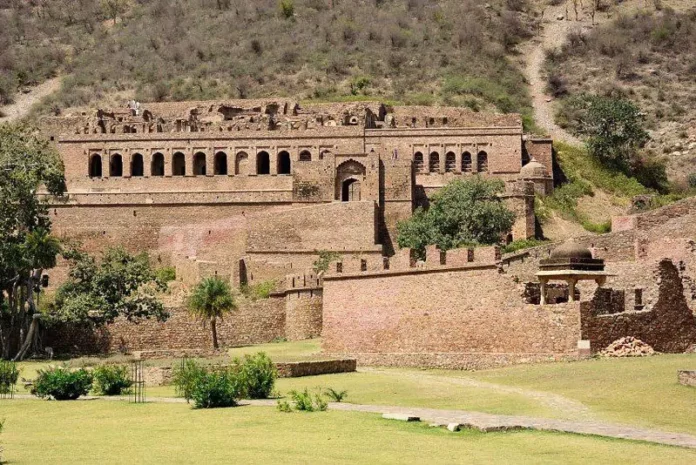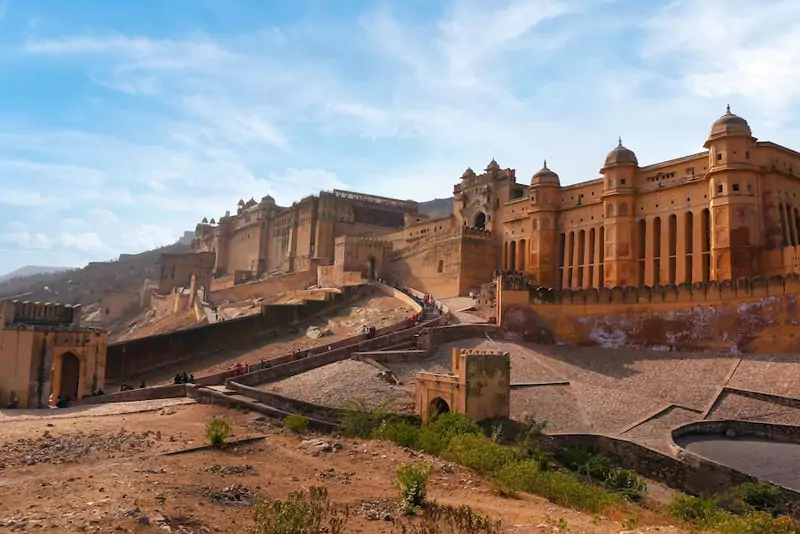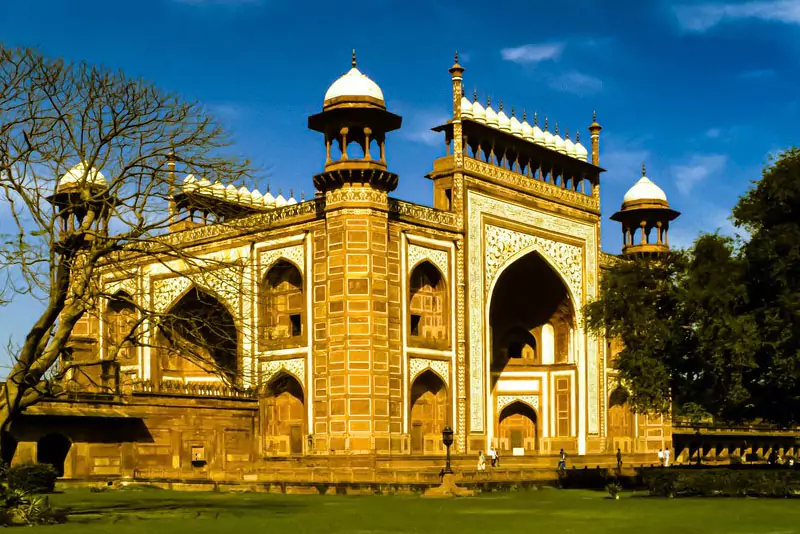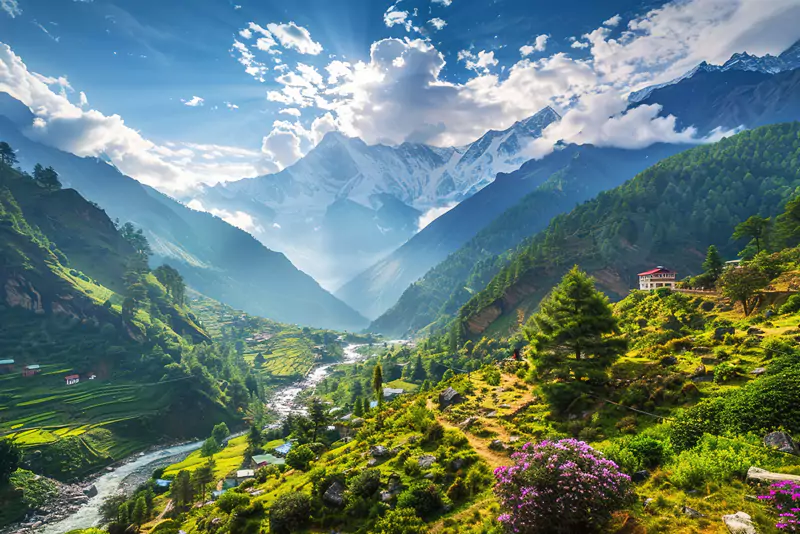Nestled amid the lush green hills of the Aravallis, the majestic Bhangarh Fort stands as a captivating blend of history and mystery. Located about 50 kilometers from the Sariska Sanctuary, between Jaipur and Alwar, this 17th-century fort was built by Raja Madho Singh, the younger brother of the renowned Mughal general Man Singh of Amber.
At its peak, Bhangarh was a thriving township, home to over 9,000 residences until its decline around 1720. The fort complex was well protected by three layers of fortifications and five imposing gates. Within its walls lie the ruins of grand havelis, ancient temples, and abandoned marketplaces—silent witnesses to its once-prosperous past.
Though shrouded in legends of haunting, Bhangarh Fort continues to attract numerous visitors, drawn by its tranquil surroundings, the scenic backdrop of the Aravalli Mountains, and its impressive architectural heritage.
The Fort and Its Premises
Within the premises of Bhangarh Fort, one can witness the ruins of ancient temples, palaces, and grand havelis, each echoing the grandeur of a bygone era. In addition to the main entrance, the fort has four distinct entry gates—Lahori Gate, Ajmeri Gate, Phulbari Gate, and Delhi Gate. Though much of it lies in ruins today, the fort retains a majestic charm and offers a serene ambiance, beautifully blending with its lush green surroundings.
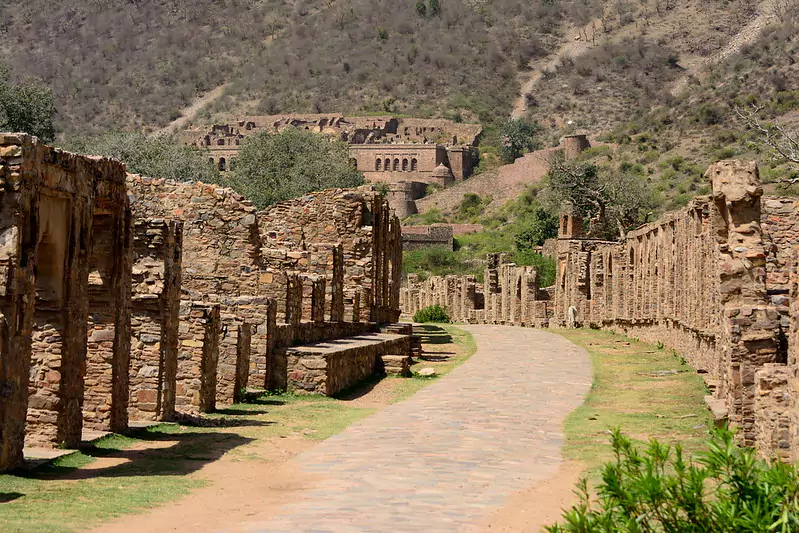
Near the main entrance stand several historic Hindu temples, including the Gopinath Temple, Someshwar Temple, Keshav Rai Temple, Mangla Devi Temple, and Ganesh Temple. These temples, built in the Nagara style of architecture, showcase the refined craftsmanship of the 17th century. The Gopinath Temple, in particular, is constructed on a 14-foot-high raised plinth and features exquisite stone carvings. Adjacent to it is the Purohitji Ki Haveli, believed to be the residence of the chief priest.
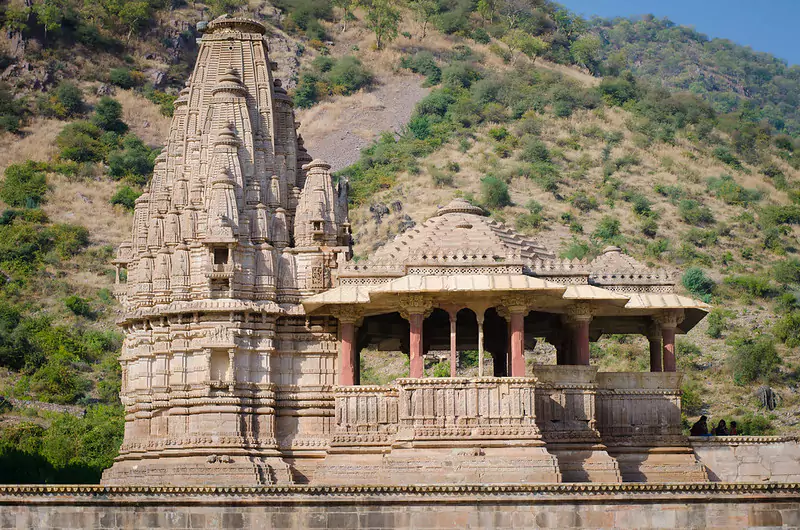
Scattered throughout the fort are remnants of stately havelis, with the most notable being Nartakiyon Ki Haveli, once home to the royal court’s dancing girls. A ruined marketplace adds to the sense of what was once a bustling township. At the far end of the fort stands the royal palace, which originally had seven stories—though only four remain today—offering a glimpse into the fort’s regal past.
The Curse of Bhangarh
Bhangarh Fort is widely regarded as one of the most haunted places in India, steeped in mystery and believed to be cursed. Among the many legends surrounding the fort, two are especially prominent among the local people.
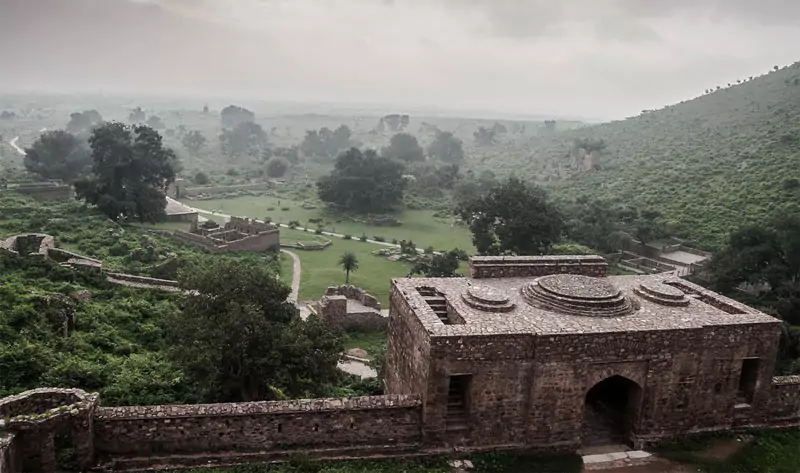
The first tale centers around a sage named Baba Balau Nath. Long before Raja Madho Singh planned the construction of the fort, the area was the meditation ground of the revered sadhu. He granted permission to build the fort under one strict condition: no structure within the complex should ever cast a shadow on his dwelling. If it did, he warned, the town would be doomed to destruction. Years later, Madho Singh’s grandson, Ajab Singh, defied the sage’s warning and built the fort taller. The shadow eventually fell on the sadhu’s home, and, as foretold, the town met its tragic end.
The second legend involves the beautiful Princess Ratnavati, who attracted many suitors from royal families across the land. A local wizard, skilled in black magic, became infatuated with her. One day, as the princess was shopping for ittar (perfume), the wizard enchanted the bottle with a love potion, hoping to win her affection. Sensing the deception, Ratnavati threw the bottle away, and it shattered on a nearby boulder. The spell backfired—the boulder rolled down and crushed the wizard. Before dying, he cursed the entire kingdom, declaring it would soon be reduced to ruins and no one would ever be able to live there again. The curse seemed to come true when invading Mughal forces later attacked, massacring all the inhabitants, including Princess Ratnavati.
Because of its eerie reputation, entry to Bhangarh Fort is strictly prohibited between sunset and sunrise.
Despite its ruined state, Bhangarh Fort remains a breathtaking sight, nestled at the foot of a hill amidst serene and verdant surroundings. A visit to this historic site offers a haunting yet mesmerizing glimpse into a once-glorious kingdom.
Bhangarh Fort Timings and Entry Fee
🕒 Timings: Open daily from 6:00 AM to 6:00 PM
🚫 Note: Entry is strictly prohibited before sunrise and after sunset due to safety and local beliefs.
- Bhangarh Fort Entry Fee
The entry fee for Bhangarh Fort is typically around ₹20–₹30 per person. - Indian nationals: ₹20 per person
- Foreign nationals: ₹200 per person
- Children below 15 years: Free entry
Note: Entry fees may vary slightly depending on local authorities or changes in tourism policies.
Location:
Bhangarh Fort is located in the Alwar district of Rajasthan, approximately 83 km from Jaipur and about 50 km from the Sariska Tiger Reserve.
Nearest Major Cities and Travel Routes:
1. From Jaipur (83 km)
By Road: Take NH21 towards Dausa → Turn at Gola Ka Bas → Reach Bhangarh via Thanagazi.
🕒 Travel Time: ~2 hours
🚖 Option: Cabs and private taxis available.
By Bus: Buses available from Jaipur to Dausa or Alwar, then local transport to Bhangarh.
2. From Alwar (90 km)
By Road: Via Sariska → Tehla → Bhangarh Fort
🕒 Travel Time: ~2.5 hours
3. From Delhi (280 km)
By Road: Via NH48 → Alwar → Bhangarh
🕒 Travel Time: ~5–6 hours
🚖 Recommended: Private taxi or self-drive
By Train: Train to Dausa or Alwar, then take local taxi to Bhangarh
4. From Dausa (30–35 km) – Nearest Railway Station
By Road: Take a cab or auto directly to Bhangarh Fort.
🕒 Travel Time: ~1 hour
🚉 Nearest Railway Station:
Dausa Railway Station (approx. 30 km)
Alwar Railway Station (approx. 90 km)
✈️ Nearest Airport:
Jaipur International Airport (90 km) → Hire taxi or cab from airport






